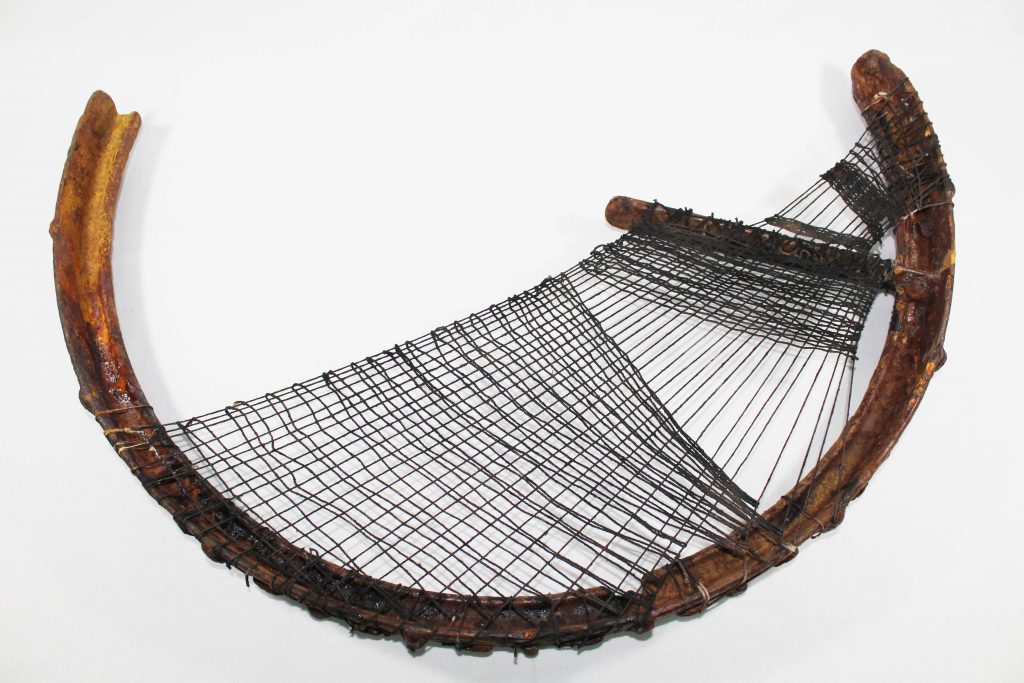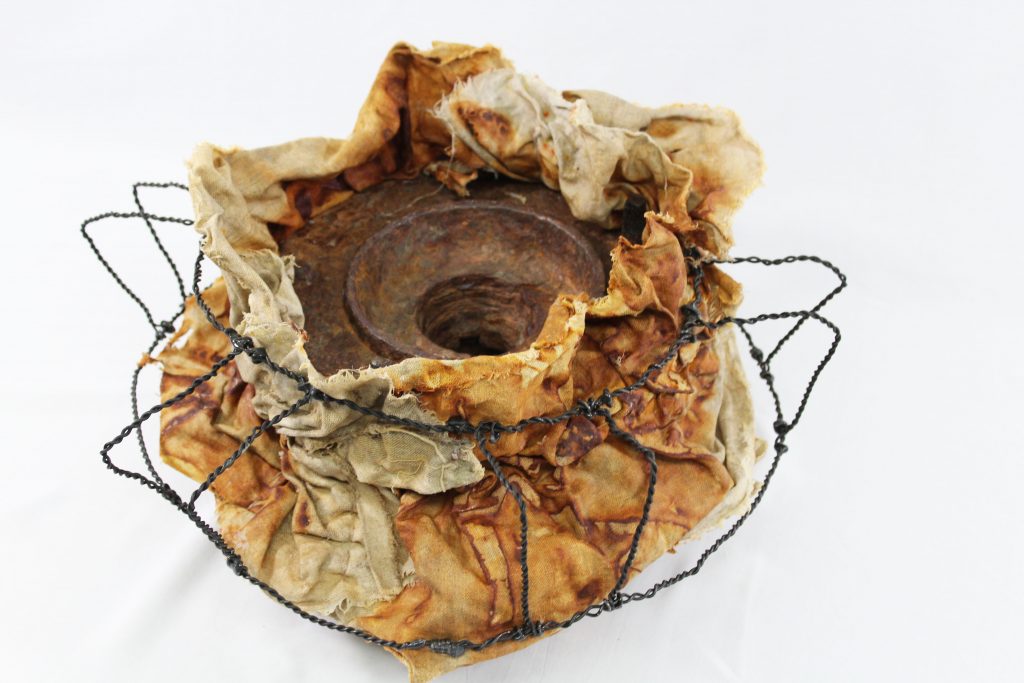“You’re brave to go in that water,” the woman said. In one hand she held a convenience-store bag of snacks and in the other a cigarette. “It didn’t always look like this, though. I used to swim here as a kid, but I wouldn’t do it now. You could step on anything in there.”
Little did the woman know: it had taken me three trips to this beach to muster the courage to don my wetsuit and explore this water. Perhaps I was as much of a fool as I looked.
It was the summer of 2020, the pandemic summer. I had only recently moved to Nova Scotia, and was still getting used to life as a rural artist. Under normal circumstances, I would be very busy. Earlier that year, I’d planned workshops for June through to October. I had a part-time job as a studio assistant, regular work that sold on consignment to seven different shops, and two exhibitions in the planning stages. Within weeks of the pandemic shutdown, all workshops were cancelled, I was laid off from my studio assistant job, the shops closed, and the exhibitions were postponed. I suddenly found myself at home and out of work in the quiet of my rural town.
To cope with the uncertainty and anxiety, I drove to beaches, any beach that didn’t have the status of “park.” This was necessary for social distancing, but it also satisfied my longing and curiosity. I grew up in northern BC and spent my childhood summers on a remote lake. The Atlantic ocean was unfamiliar to me, but I still longed for water and trees. So I followed dirt roads, logging roads, out-of-service highways. I learned that, unlike landlocked northern BC, water could be found in pretty much any direction in Nova Scotia.
That day, I drove down an old highway and turned onto a road you wouldn’t think to follow if you didn’t know it already—but I’d been twice before. There was once a paved road but it was now overgrown with weeds and full of holes. At the end, the beach was a mass grave of plastic, barrels, machine parts, and a strange number of old traffic cones. It was as if someone had a town-hall meeting with all the garbage in the North Atlantic and said: “Only go where tourists won’t find you, okay?”
The woman with the convenience-store bag was the only person I’d seen there, but up to that point we hadn’t walked close enough to speak to one another. That day, she told me that she grew up in the area, and still came for walks along this shoreline multiple times a week.
“I was one of the last to leave,” she said. I asked what she meant by that. “The land was expropriated to build a superport,” she said. She offered me a pop from her bag; I declined but thanked her anyway. Before we parted ways she told me the names of her former neighbours and gestured to their former yards, where heaps of plastic now live.
I waded into the water with more caution after she left, her words—You could step on anything—still fresh. The water was full of slippery kelp; it was hard to see what was rock and what was something else. A marine propeller scraped my leg. I found cigarette butts, tampon applicators, plastic bags, drink containers, and many car and truck engines.
A local fisherman has since told me that these engines are often used as cheap, makeshift anchors. Tugboat crews buy them from auto wreckers and drain out any fluid, then thread a chain through. The engine-anchors are used in bad weather or dangerous seas when there’s a high chance of losing a real anchor, which is much more expensive.

Fracture by Josephine Clarke
So that explains some of the debris. But no one knows where the rest of it comes from or how it gets to this beach.
After my swim, I followed the road back to the highway. Up on the the hillside, I saw the fading sign for the superport that was never built. I felt a rush of sadness. I wondered about future generations of kids, and if they will ever have a childhood like mine. The whole summer of 2020, I went back to that beach, took photos of the debris in the water, and mourned a life that now seems impossible.
As a child I would jump into the water without a second thought. Summers at the lake came with a sense of freedom and happiness, almost an urgency. After all, summer only lasted so long. As soon as the lake thawed, you jumped in. It was a childhood rite of passage.
Now, in this age of peak consumption and climate change, that carefree mindset seems far away—but I feel a new sense of urgency. That beach has taught me just how curated our trash is, and therefore that our experiences with climate change and ecological destruction are also curated. It’s a paradox: waste is ever-present but intentionally hidden. Where you live—and that often depends on your social class—affects what you see. The pace of consumption hasn’t slowed. We are just moving trash to places the affluent don’t visit.
I grew up as part of a rural, working-class family. I remember picking glass bottles out of the river sandbar with my dad, but never questioning how bizarre it was to find so many bottles in the river. When I moved to the big city for university, I assumed things would get better. But here I am as an adult salvaging even more garbage from the water, now to make pieces of art.
With the works I’ve made since visiting that beach, I aim to “bizarre-ify” the mundane. I take something many people, especially rural people, have become desensitized to and present it in an unfamiliar way. For example, Fracture is assembled from a broken tractor wheel and dyed with natural dyes I made from foraged wild sumac. With this piece, I wanted to play with the existing asymmetry but also make use of the negative space. Orbital is made with a braking mechanism from a locomotive. I wanted to add flowy organic shapes to contrast the heavy angular rigidness of the metal core so I rusted the linen cloth outdoors and manipulated it with stitching. The whole piece is encased in braided steel wire.

Orbital by Josephine Clarke
In everything I do with these found pieces, I aim to distort. I make them “more” than they are to grab people’s attention. By doing this, I’m in some ways combating the industrial starkness of the found object but this distortion can also break through nostalgia. If a tractor wheel is just a tractor wheel, people will attach their own meanings. But if I can make it strange, people think about it longer. Suddenly, there is space for conversation: “It’s what? And you found it where?!” (It’s like me with the glass bottles in the river of my childhood. I needed some degree of separation or abstraction to understand how bleak that scene actually was.)
Over the last two years, I’ve aimed to have my work either digitally accessible to rural communities or actually installed in rural locations. For example, I’m currently undertaking a Canada Council-funded exploratory project to make public art outdoors in remote locations. Rural communities are often left out of vital conversations but are often hardest hit by environmental changes, especially through the boom-and-bust cycle of industry. When industry packs up and leaves, it reveals the promises it doesn’t keep, and the local people are left to deal with the consequences. This is what I saw at the abandoned superport site that day. Through all of my work, I hope to create space for critical dialogue about the impacts of climate change and over-consumption, especially among rural audiences.


I read this piece with interest
Her art work is amazing and thought provoking
Amazing stuff Josie I remember digging for bottle’s in the river bank of the Fraser long ago .
Sad to hear about the super port trash dump please be careful love you dad